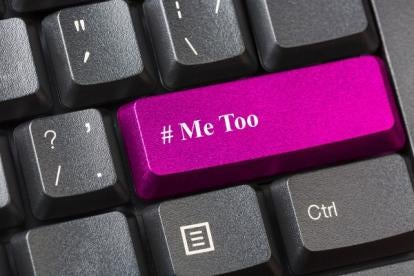In the lead-up to the close of the Government’s consultation on sexual harassment in the workplace we will be running a series of blogs on the issue, starting with a look at existing legislation, how it works and how it holds employers accountable for sexual harassment in the workplace.
Under the Equality Act 2010 (EA 2010), sexual harassment is defined as unwanted conduct of a sexual nature, which has the purpose or effect of either: (a) violating the complainant’s dignity; or (b) creating an intimidating, hostile, degrading, humiliating or offensive environment for the complainant. Case law has interpreted the concept of such conduct widely – a single incident can constitute harassment and when considering the purpose or effect of the conduct, a largely subjective approach is taken based on the point of view of the complainant. So the scope of conduct constituting harassment can range anywhere from an overt physical, sexual act to comments of a faintly smutty nature about an unknown third party within accidental earshot of somebody who is nonetheless offended by it.
The EA 2010 makes employers liable for the conduct of employees – anything done by an employee in the course of their employment is treated as having also been done by the employer regardless of whether or not it was done with the employer’s knowledge or approval. An employer’s only defence is if it can show it took all reasonable steps to prevent the employee from doing the act, a position which we will look at in more detail later in this blog series.
An employer’s liability under the EA 2010 only extends to acts done by its employees in the course of employment. On its face that appears quite restrictive but under the EA 2010 “employment” also includes workers and relationships such as apprenticeships and personal service contracts. “In the course of employment” is a question of fact for the Tribunal to consider, giving those words their everyday meaning as a non-lawyer would understand it to be. Or that was the idea, but the Employment Tribunals have been quite generous with the construction of that concept, recognising that to find that the harasser was acting outside their employment might well deny the victim any meaningful remedy.
Further, just because the harasser’s status falls outside the definition of “employment” doesn’t mean it’s the end of the road for vicarious liability. In certain circumstances, employers can be liable for the conduct of independent contractors or self-employed consultants, as well as employees, agents and workers. Whether or not an employer is held vicariously liable in such cases is a two-stage test. First, it is necessary to consider whether the relationship between the employer and the harasser is one of employment or akin to employment. This is assessed according to five criteria namely whether:
-
the employer is more likely to have the means to compensate the victim and can be expected to have insured against that liability
-
the conduct occurred as a result of activity being taken by the harasser on behalf of the employer
-
the harasser’s activity is part of the business activity of the employer
-
the employer, by employing the harasser to carry on the business activity, created the risk of the conduct committed by the harasser
-
the harasser was, to a greater or lesser degree, under the control of the employer
As part of the second stage of the test, it is necessary to consider whether the connection between the conduct in question and that employment or quasi-employment was sufficiently close to warrant liability. Traditionally even fairly tenuous links have been found sufficient for this purpose – if the contract between the employer and the worker or consultant formed necessary context to the harassment occurring, that will usually be enough.
The scope of vicarious liability demonstrates that as the law currently stands employers can be held liable not only for the conduct of their employees, but of external agents, contractors, consultants and others. Defendants cannot avoid vicarious liability via technical arguments on employment status. However, what is unlikely to fall within the scope of current legal protection under the EA 2010 is sexual harassment in the workplace by third parties, such as genuinely independent contractors and customers. Stay tuned, because we will be looking at this in closer detail in our next blog.




 i
i


